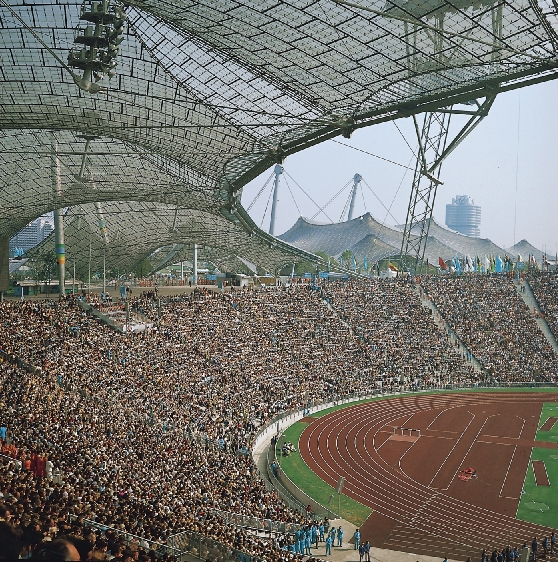Polymethyl Methacrylate (PMMA)
PMMA (Polymethyl methacrylate) stands out from other plastics due to its high light transmission, its extremely long service life, its specific properties such as high resistance to UV light and weathering and unlimited coloring options. Added to this, PMMA shows the greatest surface hardness of all thermoplastics. It can be fabricated by means of all thermoforming methods, and therefore offers huge creative scope. Another major benefit is that PMMA is 100% recyclable, which makes an essential contribution to saving natural resources.
One of the world’s best-known brands of plastic is PLEXIGLAS®, It has become the very embodiment of acrylic. PLEXIGLAS® was invented in Darmstadt; Germany in 1933 by Dr. Otto Röhm.
- History
- Properties
- Applications
- Processes
- Recycling
- Faq
History
1901: Otto Röhm, co-founder of today's Evonik Röhm GmbH, first addressed the topic of "polymers of acrylic acid" in his dissertation
1930s: Otto Röhm made essential decisions which would lead to the development of PMMA as a commercial material. When Röhm received the first PMMA product sample, he was convinced the material would be suited for a wide range of applications.
1933: PLEXIGLAS®, as Röhm called the brilliant new synthetic material, came on the market and was awarded a Gold medal at the World Expo in Paris four years later
1935: the first injection moulding compounds were made to supplement cast panels
1950s: these compounds became the material of choice for automotive rear light covers in place of glass Today: PLEXIGLAS® is now widely used in a range of applications including patio doors and conservatories, LCD display screens and the tent roof of the Olympic Stadium in Munich, Germany.
Properties
- high transparency
- light transmission (>92%)
- good resistance to UV lightening and weathering
- extremely high surface hardness
- good resistance to chemicals
- can easily be thermoformed
Applications
 |
PMMA’s most famous application is in patio roofs and conservatories where it is able to withstand extremes of weather including sun, rain and snowfall. It is also widely used in the automotive industry for exterior and interior lighting, instrument covers, spoilers and mirror housings. Elsewhere, PMMA is used for lighting including light guide panels in backlight units for LCD display screens, lenses for mobile phones, rear projection and touch screens, illuminated signs, street lighting and industrial lamps. |
Processes
PMMA is produced by polymerizing methyl methacrylate (MMA) monomer. Mass polymerisation is the most common production method. The material comes in the form of small granules, which are then formed with all thermoplastic methods (e.g. injection molding and extrusion) into molds.
Suspension polymerisation is the process of producing acrylic beads. These are small spherical particles that resemble a powder. These beads have similar properties to the granules, but their unique size and shape enables them to be used in different applications.
Extruded PMMA sheets are manufactured from polymerized PMMA pellets. These are homogenized in an extruder and then extruded by appropriate tools into solid sheets, multi-skin and corrugated sheets, or tubes and rods. Cast sheets are manufactured by casting liquid methyl methacrylate (MMA) between two plates of glass where the MMA polymerizes. Polymerization can be in a water bath, in a hot-air oven or by the Rostero process.

Recycling
PMMA is 100% recyclable by breaking it down into its constituent parts using a special thermal process or by direct reprocessing. Thermal processing sees PMMA heated to around 400°C to obtain the starting material methylmethacrylate (MMA). The liquid MMA is distilled to over 99 % purity and can then be reused as a starting material in production processes. Direct processing of PLEXIGLAS® comprises the collection of production scrap which is sorted by grade for grinding and dedusting so it can be returned to the extrusion process to produce new sheeting.
